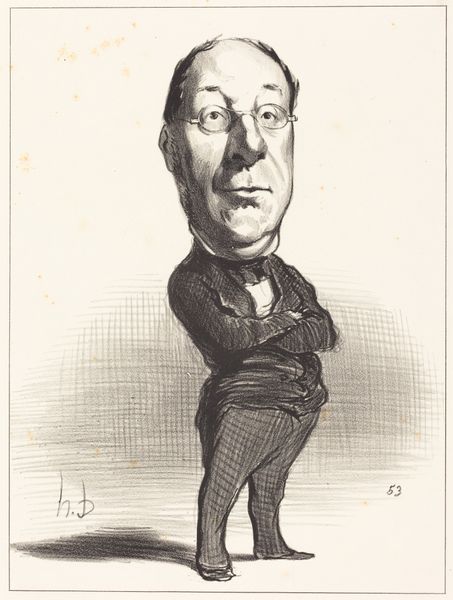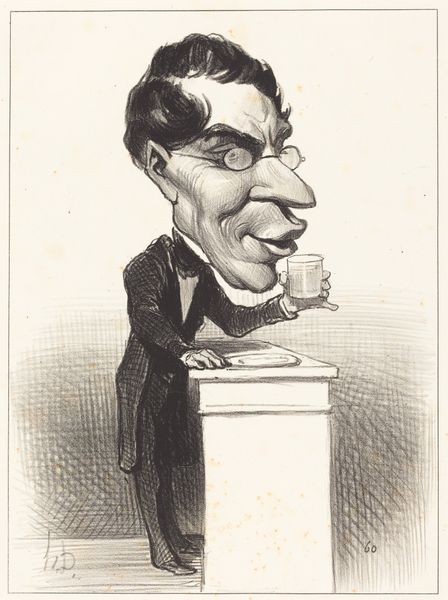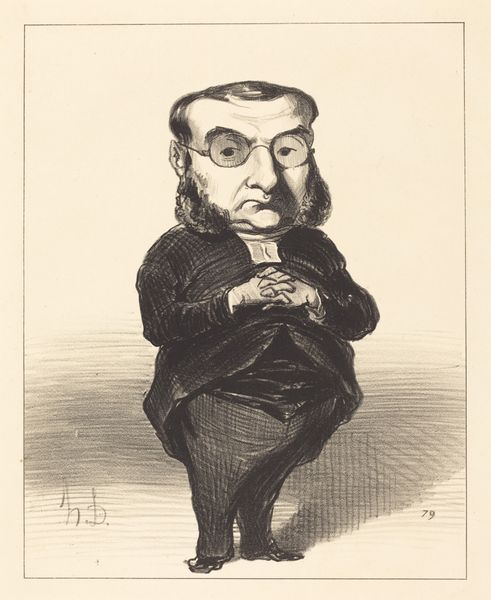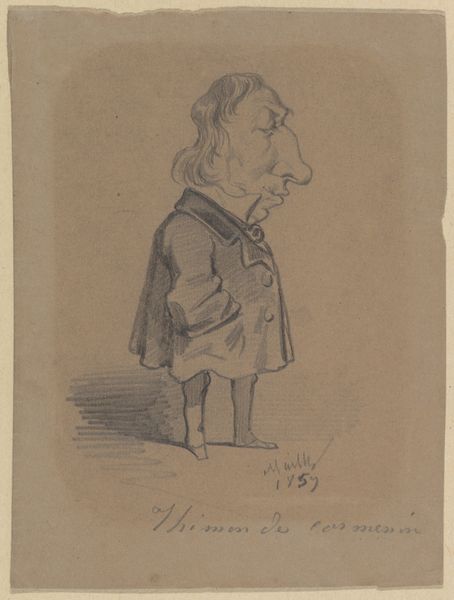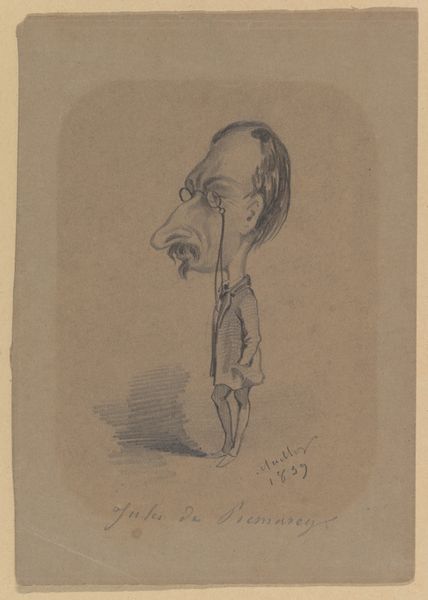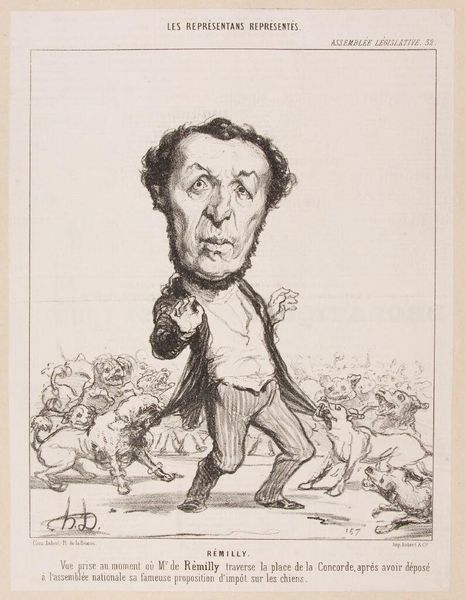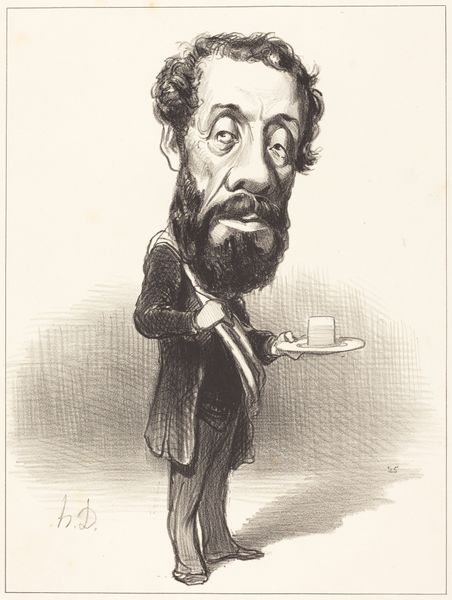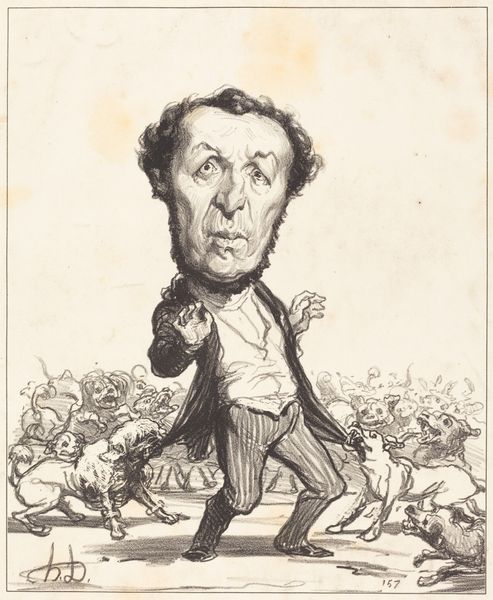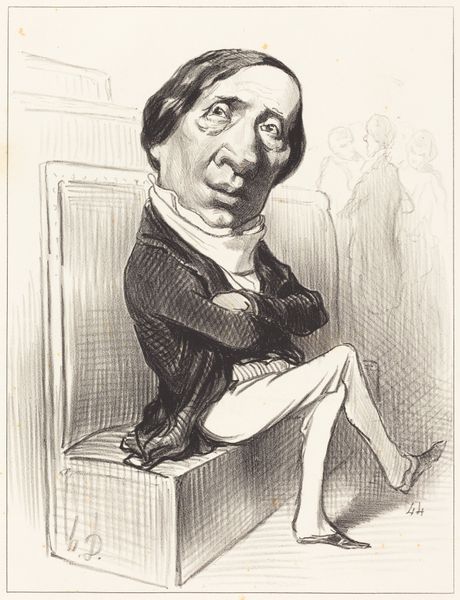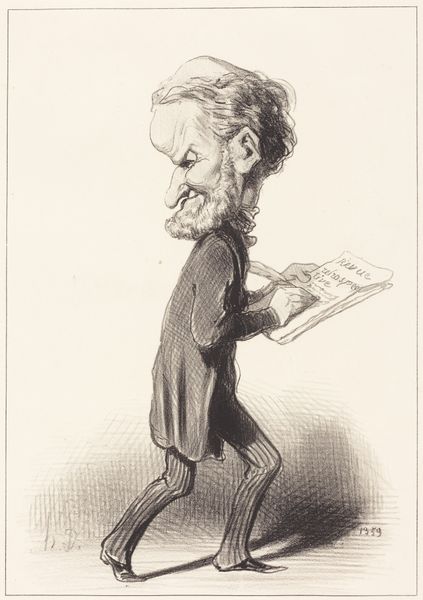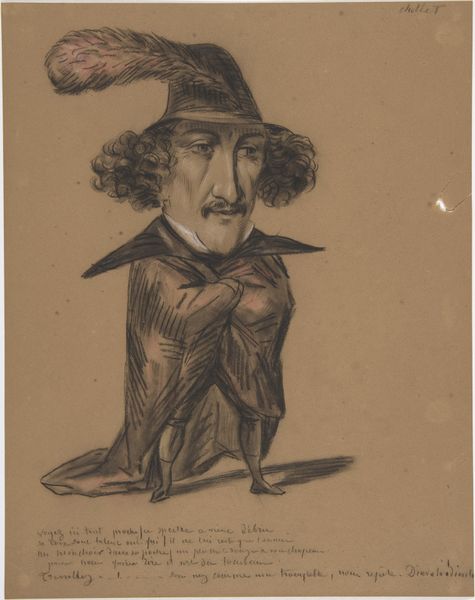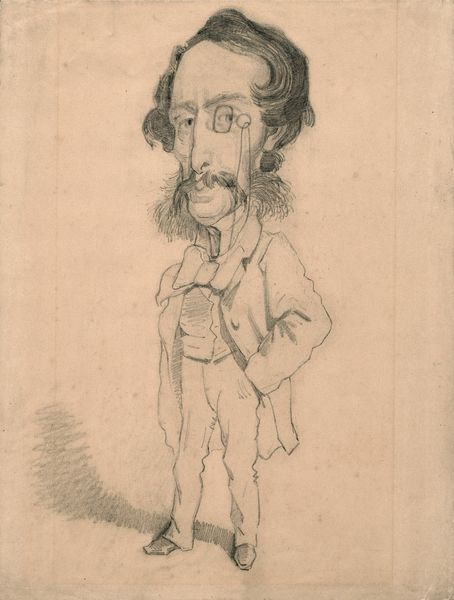
drawing, graphic-art, print, paper, charcoal
#
portrait
#
drawing
#
graphic-art
# print
#
caricature
#
caricature
#
charcoal drawing
#
paper
#
romanticism
#
portrait drawing
#
charcoal
Dimensions: 484 × 321 mm (primary support); 559 × 343 mm (secondary support)
Copyright: Public Domain
Curator: This is Étienne Carjat’s “Caricature of a Man," rendered in charcoal on paper. While its exact date is unknown, the work finds its home here at the Art Institute of Chicago. What's your take as we approach this piece? Editor: The exaggerated head, immediately, suggests a character brimming with self-importance. I am curious as to how the artist decided to present this, what it tells us about proportion, but most of all, character. Curator: The choice to amplify certain features isn’t merely aesthetic. Caricatures, historically, act as social commentaries. This oversized head might symbolize inflated ego or intellect. Consider how royalty, authority, was visually represented. The exaggeration pushes it beyond realism into satire, and in so doing comments on power itself. Editor: Absolutely, and observe how the fine hatching technique across his coat creates a textural contrast with the relatively smooth face, highlighting the head even further. The limited tonal range creates a kind of focused intensity. I suppose the question for me is, does it cohere structurally? Curator: Indeed, this tension contributes to its success, but I'm struck by the deliberate decision to leave much of the body less defined. The weight resides above the shoulders. Carjat masterfully conveys an archetype; we aren't meant to see just a man, but a representation of specific societal attitudes or personality traits. Think about it – he captures a sort of 'everyman' despite the specific exaggeration. Editor: That's fair. There is a kind of universality achieved through distortion. Despite it depicting what we imagine is a specific individual, we can all recognize types within. Curator: I believe so, and this recognition triggers a culturally conditioned emotional response. Caricature, in many societies, acts as a tool for both humor and critique. This image echoes broader narratives about societal roles, aspirations, and anxieties that permeate the collective unconscious. The face that could appear stern can easily be taken for one of playful charm, as well. Editor: Ultimately, it’s a testament to the work’s enduring relevance—its capability to provoke discourse, stir interpretations. And the mastery of light and shadow imbues what is a fairly simple portrait of this figure with a great complexity that lasts. Curator: Precisely. Carjat, whether intentional or not, unearthed layers of our shared psyche. A drawing from long ago becomes a mirror, reflecting the very human drama of how we perceive and portray one another.
Comments
No comments
Be the first to comment and join the conversation on the ultimate creative platform.
